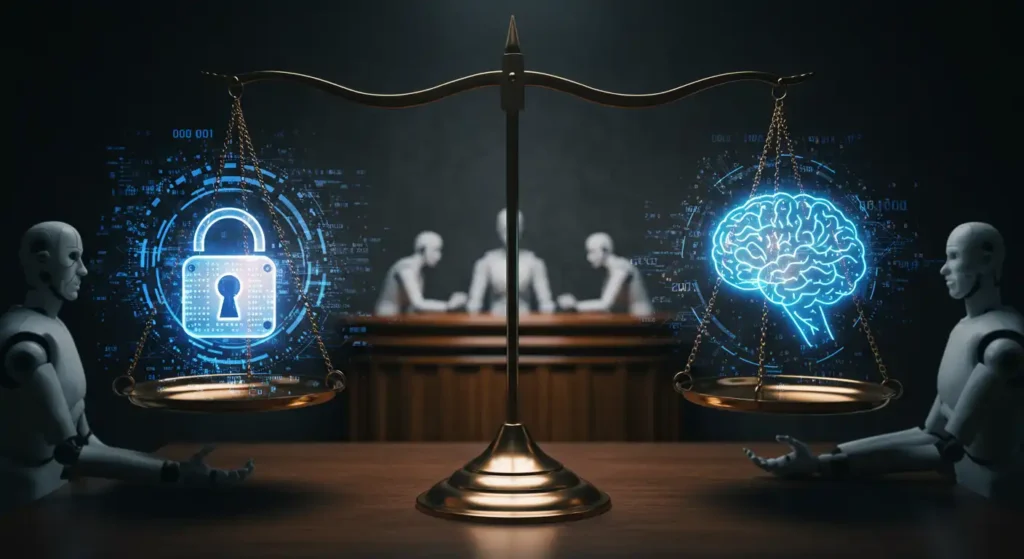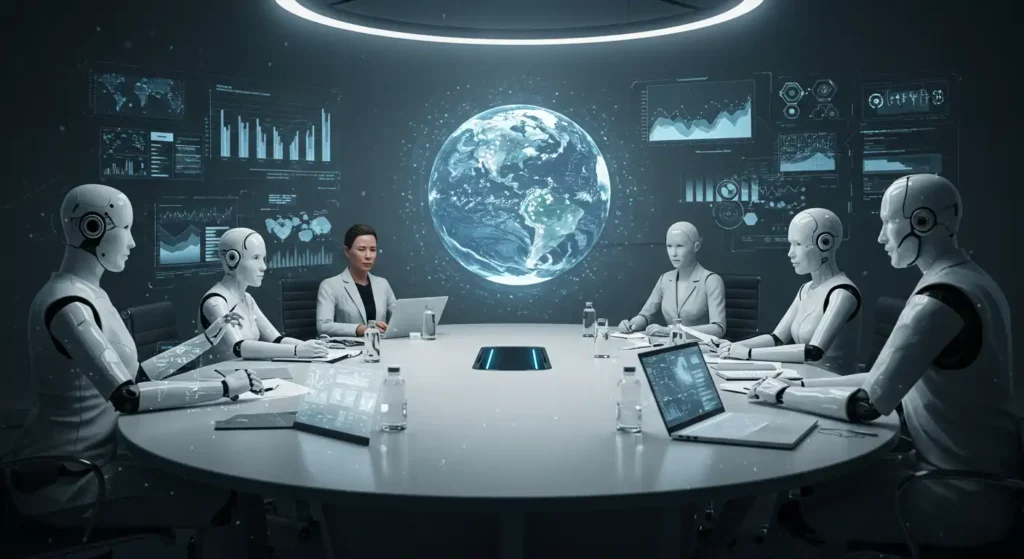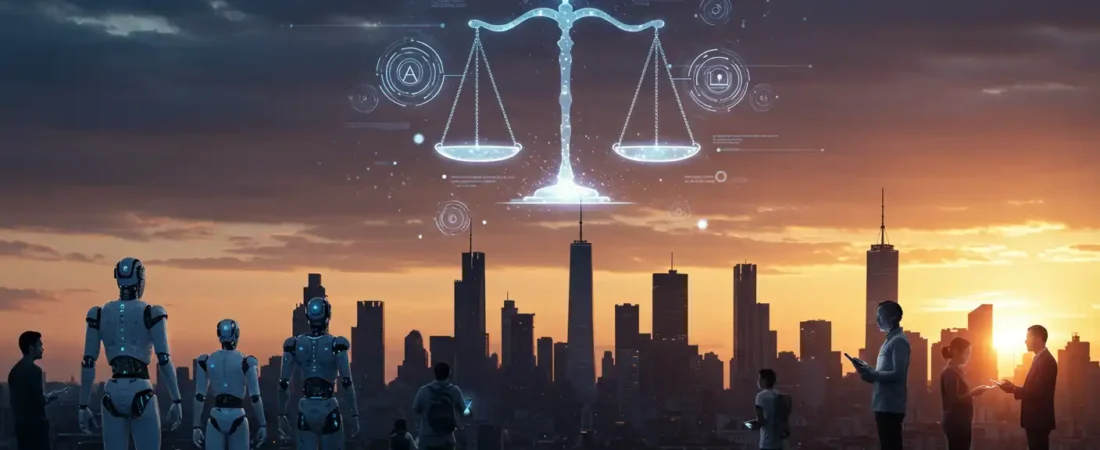Artificial Intelligence Ethics: How Responsible AI and Explainable AI Are Shaping a Safer Future
Artificial Intelligence ethics is no longer a niche discussion reserved for academics or tech insiders it has become a core part of the global conversation on the future of technology and society. The rise of responsible AI means that governments, corporations, and developers are under increasing pressure to create AI technologies that are not only innovative but also transparent, fair, and safe for all.
In recent years, concepts like explainable AI, AI check systems, and open artificial intelligence have gained momentum.Offering new ways to ensure that AI-driven decisions are understandable, auditable, and aligned with human values. But the real question remains: Are we finally doing it right?
The Challenges and Controversies in Artificial Intelligence Ethics

When discussing Artificial Intelligence ethics, we cannot avoid the real-world challenges and controversies that continue to emerge as AI becomes deeply integrated into society. While significant progress has been made through ethical guidelines, frameworks, and regulations, several obstacles prevent flawless implementation. These include data privacy concerns, bias in AI models, and the delicate balance between transparency and security in the era of open-source AI.
Data Privacy and Surveillance Risks
Data privacy is one of the most pressing and sensitive aspects of Artificial Intelligence ethics. AI systems thrive on vast datasets often containing personal information such as medical records, financial histories, geolocation patterns, and behavioral preferences.
The ethical dilemma arises when this data is collected without explicit user consent, stored insecurely, or used in ways that individuals did not anticipate. The misuse of personal data can lead to discrimination, identity theft, and even political manipulation.
The Edward Snowden revelations in 2013 showed how extensive government surveillance programs could be, raising concerns about mass data collection. Today, with AI-powered analytics, surveillance has become far more advanced and potentially invasive.
According to the Electronic Frontier Foundation (EFF):
“Artificial intelligence, when applied to surveillance, dramatically increases the power of governments and corporations to monitor individuals.” (source)
In the spirit of responsible AI, data collection must follow strict guidelines: informed consent, data minimization, and anonymization wherever possible. Users should have clear visibility into what data is collected and how it is used.
Bias in AI Models
Algorithmic bias is one of the most dangerous threats to Artificial Intelligence ethics. If the training data contains biases, the AI will inevitably reproduce and amplify them.
A notable case occurred at Amazon, where an AI recruitment tool was discontinued after it was found to favor male candidates over equally qualified female candidates. The system learned this bias from historical hiring data that reflected a male-dominated workforce.
Similarly, the Gender Shades project by MIT found that facial recognition algorithms performed with up to 99% accuracy for lighter-skinned males but only 65% for darker-skinned females (source).
Explainable AI as a Solution
One of the most promising solutions to AI ethics challenges is explainable AI. Making AI decisions transparent helps uncover biases, improve trust, and ensure accountability.
Tools like SHAP (SHapley Additive exPlanations) and LIME (Local Interpretable Model-agnostic Explanations) provide insights into which factors most influenced a model’s decision. This is especially critical in sectors like healthcare, criminal justice, and finance, where decisions can have life-altering consequences.
However, a key challenge remains: making explanations understandable to the general public. Technical transparency without plain-language explanations risks alienating the very people AI systems are designed to serve.
Open Artificial Intelligence: Transparency vs. Misuse
The philosophy behind open artificial intelligence promotes transparency by making AI models, datasets, and code accessible for public audit. This openness fosters innovation, encourages collaboration, and accelerates problem-solving.
But there is a darker side. Open access to powerful models can also enable malicious actors to create deepfakes, generate disinformation, or conduct cyberattacks.
For example, generative AI has been used to produce realistic fake news articles capable of swaying public opinion, particularly during election periods. The ethical challenge lies in balancing transparency with safeguards that prevent abuse.
The Future of Artificial Intelligence Ethics: Are We Finally Doing It Right?

The future of Artificial Intelligence ethics will determine whether AI becomes humanity’s greatest ally or one of its most dangerous creations. We stand at a turning point: the decisions made in the next decade about regulation, transparency, fairness, and accountability will shape AI’s role in society for generations to come.
Right now, there’s cautious optimism. Emerging frameworks for responsible AI, better explainable AI tools, robust AI check systems, and discussions about the balance between open artificial intelligence and security suggest that we are learning from past mistakes. But optimism alone isn’t enough practical, enforceable measures are critical.
The Rise of Global AI Ethics Regulations
Around the world, governments are taking AI ethics seriously. The European Union’s AI Act is one of the most ambitious legislative efforts to date. It categorizes AI systems into risk levels from minimal to unacceptable and imposes strict requirements on high-risk applications, such as biometric identification and AI in hiring processes.
The U.S. is also moving toward more formal AI governance, with initiatives like the Blueprint for an AI Bill of Rights, which emphasizes principles such as data privacy, algorithmic discrimination prevention, and clear user notification when interacting with an artificial intelligence chat system.
However, regulation has to keep up with innovation. AI development moves at a speed that often outpaces legislative processes. This gap creates opportunities for unethical exploitation of AI before legal frameworks can catch up.
Technological Advances in Responsible AI
The next generation of AI tools is being built with ethics in mind from the ground up. Responsible AI now includes automatic fairness testing, explainability dashboards, and built-in bias detection.
For example, companies like Microsoft and Google have developed internal “AI ethics review boards” that evaluate new systems before public release. OpenAI’s models now come with safety layers that limit harmful content generation, while still enabling creative and productive artificial intelligence chat experiences.
One of the most promising developments is continuous AI auditing an automated AI check process that monitors deployed systems in real time. Instead of ethics being a one-time approval before launch, this approach ensures that models stay compliant and fair as they interact with dynamic, real-world data.
Explainable AI in High-Stakes Decisions
The push for explainable AI will intensify as AI takes on more critical decision-making roles in areas like healthcare, law enforcement, and finance. A doctor prescribing treatment based on AI recommendations, a judge using AI-assisted risk assessment tools, or a bank approving a loan based on machine learning in all these cases, understanding why the AI made a certain decision is non-negotiable.
Advanced interpretability techniques are evolving. For instance, attention heatmaps can show which parts of an image influenced a diagnosis by a medical AI. In text models, token-level attribution can reveal which words in a user’s artificial intelligence chat triggered certain outputs.
As Harvard Business Review points out:
“Explainable AI is no longer a luxury it’s a necessity for accountability in automated decision-making.” (source)
In the near future, these explanations will likely become more visual, interactive, and accessible to non-technical audiences, bridging the gap between AI developers and end users.
The Role of Open Artificial Intelligence in the Future
The concept of open artificial intelligence will remain both a blessing and a challenge. On one hand, open-source models democratize innovation, enabling startups, researchers, and independent developers to build ethical AI without depending solely on tech giants. On the other hand, unrestricted access to powerful AI can also empower malicious actors.
In the future, we can expect more hybrid approaches open access for research and innovation, but with strict API controls, watermarking of AI-generated content, and legally binding ethical use agreements.
Public Awareness and Education in AI Ethics
The success of Artificial Intelligence ethics will depend not only on regulations and technology but also on public understanding. The more people understand how AI works and what its ethical risks are the harder it will be for unethical practices to go unnoticed.
AI literacy programs are emerging in schools, universities, and corporate training. These initiatives teach people how to identify bias in AI, understand privacy concerns, and demand transparency from AI-powered services.
Conclusion – Shaping the Ethical Future of AI Together

The path forward for Artificial Intelligence ethics is neither easy nor guaranteed. While the rise of responsible AI, explainable AI, continuous AI check systems, and more cautious approaches to open artificial intelligence are encouraging. The truth is that ethical AI is not a destination it’s an ongoing process.
We must acknowledge that technology alone cannot solve the problem. Ethics is a human responsibility. From the engineers building algorithms to the policymakers drafting legislation, from businesses deploying AI-powered tools to everyday users engaging with an artificial intelligence chat, everyone has a role to play.
If we want AI to truly serve humanity, we must keep asking hard questions:
- Who benefits from this AI system?
- Is the data fair and representative?
- Can we explain and justify the AI’s decisions?
- Are there safeguards to prevent misuse?
The future we choose will depend on the standards we set today. As we move into an era where AI will influence almost every aspect of life from the justice system to personal healthcare ethical vigilance will be the difference between AI becoming a trusted partner or a dangerous liability.
The good news? We are finally on the right track. The collaboration between open artificial intelligence communities, global regulators, researchers, and informed citizens is stronger than ever. If this momentum continues, we may one day look back and say with confidence: Yes, we did it right.
Your Turn to Act
The future of AI ethics won’t be written by algorithms it will be shaped by people like you.
- Demand transparency in the AI tools you use.
- Support companies that prioritize responsible AI.
- Educate yourself and others about AI check systems and explainable AI.
- Advocate for ethical standards in open artificial intelligence initiatives.



